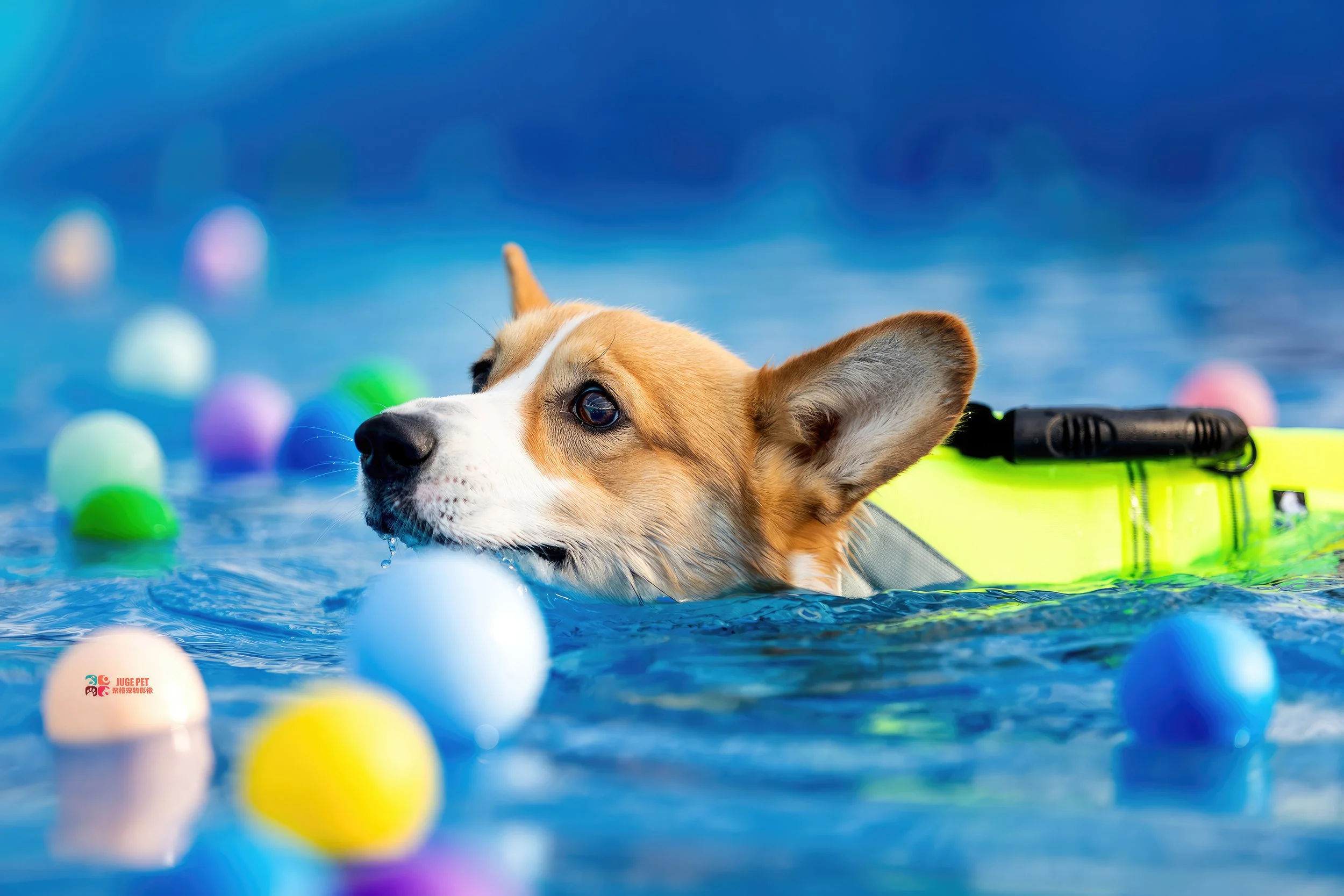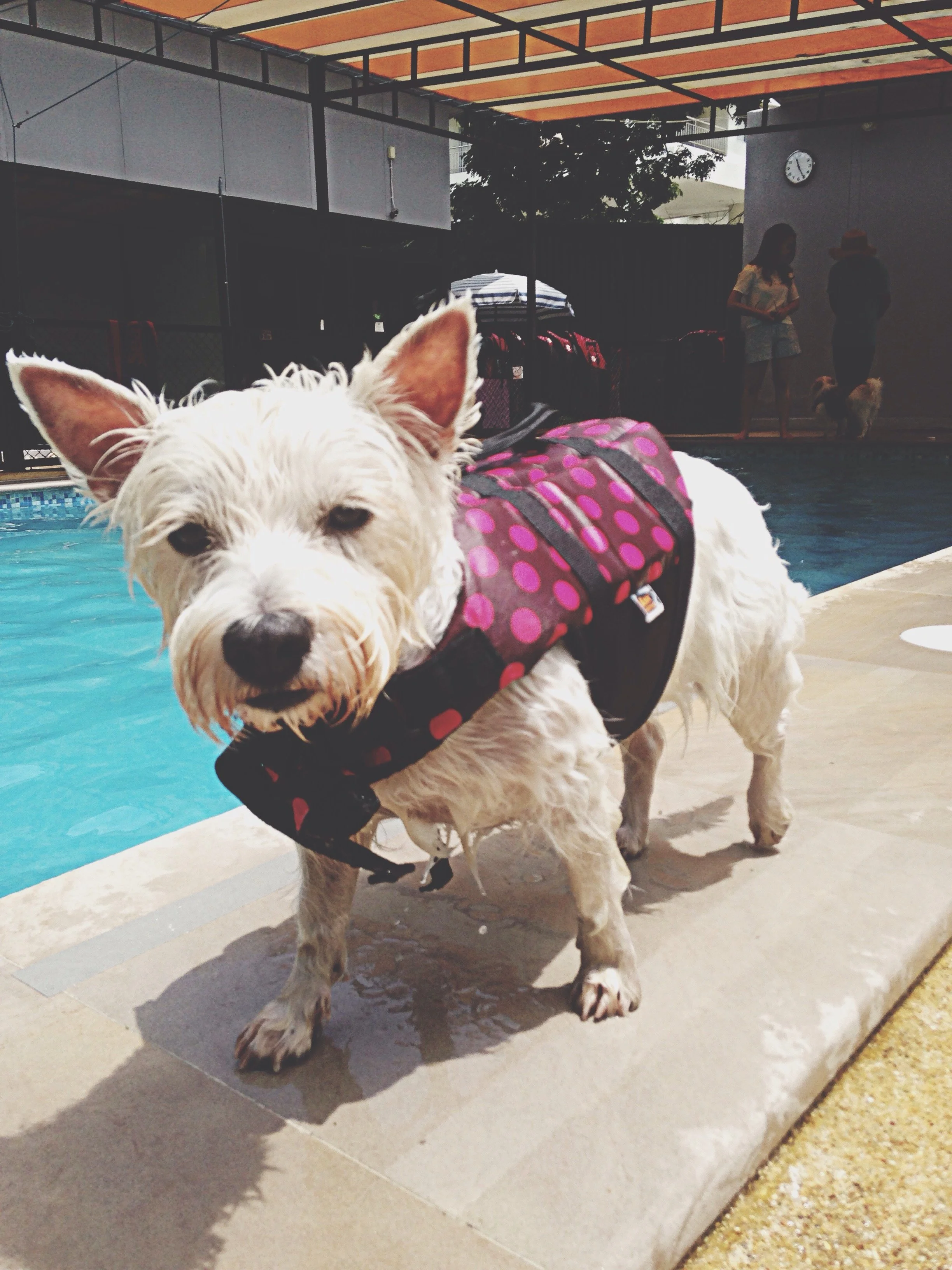How to Keep Your Dogs Safe in the Pool This Summer
Summer days are warm, and everyone, including many dogs, wants to take a dip in the pool. Just like children, dogs need supervision around the pool to prevent accidental drowning. Did you know that some breeds of dogs are more likely to have trouble swimming than others?
Are Dogs Natural Swimmers?
When I was in vet school, I adopted a Golden Retriever who had ruptured both of his cruciate ligaments. After his knee surgeries, his orthopedic surgeon recommended swimming to rehabilitate his knees. Surely this Golden would take to the water just like every other Golden.
Absolutely not. My husband and I brought him to a local lake where Belvedere stood chest-deep looking at me with his beautiful brown eyes in complete misery. He had no idea how to swim, nor any desire to swim. The swimming “gene” had completely bypassed him.
Belvedere was not alone. There are dogs of certain breeds and shapes who struggle in the water:
Dogs with short noses, such as Pugs, French Bulldogs, English Bulldogs, and Boston Terriers, are at risk of drowning because water easily gets up their noses.
Long dogs with short legs, like Dachshunds and Corgis, because their tiny legs have difficulty keeping their large bodies afloat.
Dogs with round, barrel-shaped bodies because they do not float well. These body shapes include Pit Bulls, Boxers, as well as the French and English Bulldogs mentioned above. (1,2)
Why Dogs Drown?
Pets who drown are typically either under 4 months old, older pets, or pets with a medical condition such as seizures or a heart condition. (2) In my experience as a veterinarian, the drownings and near drownings that I have treated have occurred in pets with blindness, orthopedic, neurologic, or cognitive issues. For example, a dog who knew how to swim when he was younger may no longer be able to get out of the pool once he develops arthritis. Later in life, some dogs develop Cognitive Dysfunction Syndrome (CDS), similar to Alzheimer’s in humans. A dog with CDS can easily take a tumble into the pool and no longer remember how to get out.
Dog Life Vest
A life vest is essential for dogs like Belvedere and the breeds and dogs mentioned above whenever a pup is near the water. I like life vests with a handle at the top so you can easily lift your dog out of the water if needed.
A dog life vest is also a great tool for teaching a dog to swim. Some dogs may graduate from the vest. If you are having trouble teaching your dog to swim, reach out to a dog trainer experienced in swim lessons. For weak swimmers, keep that life vest handy by the pool door. Slip it on when you go out to the pool, as you would a harness and leash when you go for a walk.
How To Protect Your Dog from Pool Dangers
Ideally, anyone with a dog and a pool should have a pool fence. This would protect your pup and any visiting children from unsupervised tumbles. If you cannot install a pool fence, a pool alarm can alert you if a pet falls into the pool, but you must be home to save your pet. You can sign up for pet CPR training through the Red Cross. If you are away from home, your pets should not have access to the pool.
If your dog has trouble getting out of the pool, ask your pool company about pet entry ramps and ladders.
Dogs like to do silly things like drink pool water. However, pool water contains chemicals that are not safe in moderate to large amounts. Provide a bowl of cool or iced water near the pool to entice dogs to drink there instead of from the pool. You can also offer iced chicken stock cubes or slushies to tempt them away from the pool water.
Dogs prone to ear infections need attention to their ears after pool time. Use a dry cotton ball to ensure their ears are dry. If you see your pup head-shaking or scratching at their ears, it is time for a vet visit to check the ears.
Pool time is great exercise, fun, and respite from the heat. I hope that you and your pup enjoy safe pool time this summer.
Sources
1. Brainard, BM. Drowning. In: Cote’s Clinical Veterinary Advisor: Dog’s and Cat’s - E-Book. 4th Ed. Elsevier. Accessed June 3, 2024. https://bookshelf.vitalsource.com/books/9780323642781
2. Goldkamp CE, Schaer M. Canine drowning. Compend Contin Educ Vet. 2008;30(6):340-352..







